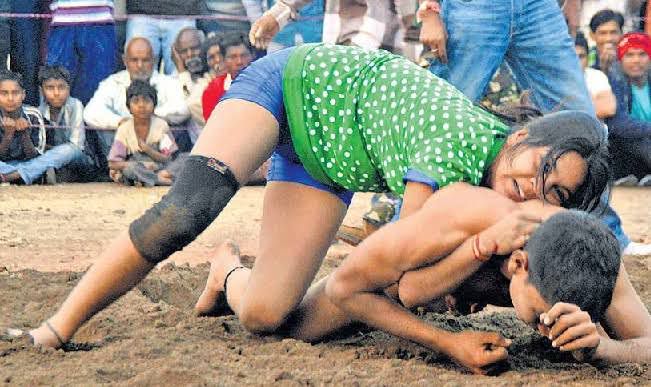Mixed Wrestling Gains Traction in India
Subtitle: Mixed wrestling is emerging as a symbol of equality, blending strength and strategy while challenging traditional norms in India’s sporting landscape.
Mixed wrestling, a sport that blends strength, skill, and strategy, is rapidly gaining popularity in India. Traditionally dominated by gender-segregated competitions, the emergence of mixed wrestling reflects the changing dynamics in the Indian sporting landscape. As athletes and audiences embrace this inclusive form of combat sport, mixed wrestling is carving out a niche for itself, challenging stereotypes and fostering equality.
The rise of mixed wrestling in India signals a new era in combat sports. Unlike traditional wrestling, where male and female athletes compete separately, mixed wrestling pits male and female competitors against each other in the ring. This shift is not just about competition; it represents a broader movement toward gender equality and inclusivity in sports. Indian athletes are breaking barriers, and mixed wrestling offers a unique platform where both men and women can showcase their skills on an equal footing.
Mixed wrestling’s appeal is particularly strong among the youth. Young athletes, inspired by international trends and driven by a desire for new challenges, are flocking to this sport. Wrestling academies across the country are now offering mixed wrestling as part of their training programs. This growing interest is evident in the increasing number of mixed wrestling events being organized at the school, college, and state levels. The sport’s ability to challenge traditional norms and offer a level playing field is resonating with a generation that values equality and fairness.
Support Independent Journalism? Keep us live.
The popularity of mixed wrestling in India has also been fueled by media coverage and the endorsement of celebrities. Documentaries, reality shows, and social media platforms have brought the sport into the mainstream, highlighting its appeal and the stories of those who compete in it. Indian celebrities and athletes have also begun to endorse mixed wrestling, further amplifying its reach and acceptance. This visibility has not only attracted more participants but also garnered the attention of sponsors and investors, who see potential in the sport’s growing fan base.
Despite its growing popularity, mixed wrestling in India faces several challenges. Traditionalists argue that the sport undermines the distinct physicality of male and female athletes. Additionally, concerns about safety and the risk of injury in mixed-gender bouts have sparked debates. However, proponents argue that with proper regulation and training, these concerns can be addressed. The sport also presents opportunities for promoting gender equality in a society where traditional roles often dictate the participation of women in sports.
The future of mixed wrestling in India looks promising. As the sport gains traction, there is potential for it to be recognized at the national level, with the possibility of inclusion in major sporting events. Mixed wrestling could also inspire other sports to adopt more inclusive practices, contributing to a broader cultural shift in Indian sports. The continued support from athletes, coaches, and governing bodies will be crucial in shaping the sport’s future in India.
Mixed wrestling is more than just a sport; it is a symbol of the changing social fabric in India. By breaking down gender barriers and offering a new form of competition, it challenges traditional norms and promotes a culture of equality and respect. As mixed wrestling continues to gain traction, it promises to bring about significant changes in the way sports are perceived and played in India, paving the way for a more inclusive sporting future.


Comments are closed.